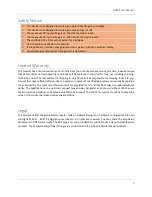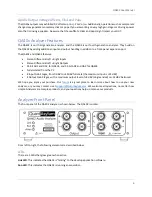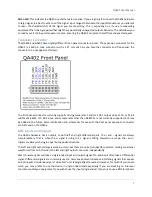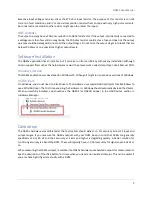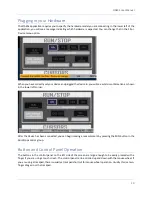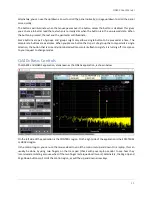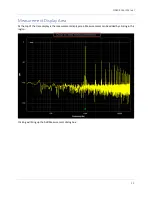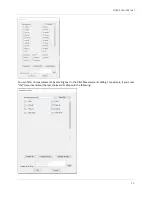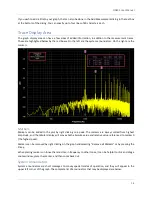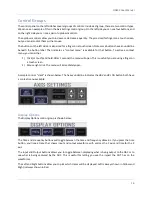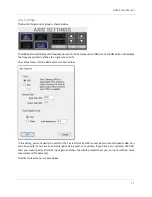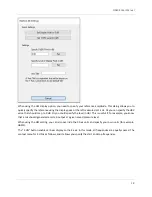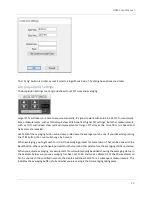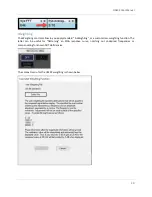
QA402 User Manual
5
Online Documentation
This manual focuses primarily on the functionality of the hardware and the software. The application,
measurement techniques and tradeoffs are a substantial topic especially when the experience level of users is
considered. Additional sources of information can be found at the
In the Box
The box contains a QA402 Audio Analyzer. We do not ship cables with our products. The software for the
products may be downloaded from GitHub. The link for QA40x downloads is located
See the
Github QA40x Getting Started Wiki
Important Things to Know
This section covers some important details about the analyzer.
Model Number
In this document, the phrase
“
QA40x hardware
”
refers to the QA403 and QA402 hardware. The phrase
“
QA40x
software
”
refers to the application used to interface with the QA40x hardware. The family of hardware
products (QA402 and QA403 hardware) use the same QA40x software.
Ground Reference
There are two grounds to consider on the QA40x. The USB connection shares a ground with the PC, which in
turn shares a ground with the power distribution in your office. The audio side of the QA40x analyzer is isolated
from the USB ground: it is
floating.
When you connect the QA40x hardware to a device-under-test (DUT) to
make a measurement, you will need to establish a common reference point for the measurements. The DUT
will have its own ground (which may be similar to the PC ground). The isolation provided by the QA402 ensures
noise related to ground currents is eliminated.
If your D
UT is also floating (which is common if the DUT is powered from a “brick”
-style wall adaptor, then you
can reduce powerline hum in your measurements by connecting the floating ground to an earth ground.
BNC Input Voltages
The inputs on the QA40x hardware are designed for AC inputs, with some DC present. The DC will be blocked
by the input capacitor and cannot be measured. DO NOT EXCEED THE SPECIFIED LIMITS, OR YOU WILL DAMAGE
THE QA40x AND/OR MIGHT INJURE YOURSELF.
BNC Output Voltages
The BNC outputs are DC coupled. They cannot withstand inadvertent connections to DC voltages where more
than 10 mA of current might flow. Extended shorting of the outputs will result in an increase in temperature
of the output stage, which can cause a permanent shift in performance.


